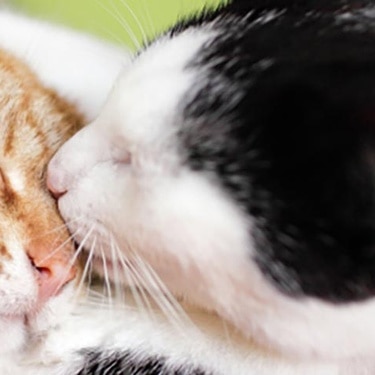
-
Find the right food for your petTake this quiz to see which food may be the best for your furry friend.Find the right food for your petTake this quiz to see which food may be the best for your furry friend.Health CategoryFeatured products
 Adult Healthy Mobility Chicken Meal, Barley & Brown Rice Recipe Dog Food
Adult Healthy Mobility Chicken Meal, Barley & Brown Rice Recipe Dog FoodAdvanced nutrition shown to support joint health and improve mobility
Shop Now Adult Salmon & Brown Rice Recipe Dog Food
Adult Salmon & Brown Rice Recipe Dog FoodSupports lean muscle and beautiful coat for adult dogs
Shop Now Adult Sensitive Stomach & Skin Chicken Recipe Dog Food
Adult Sensitive Stomach & Skin Chicken Recipe Dog FoodHill's Science Diet Sensitive Stomach & Skin dry dog food is gentle on stomachs while nourishing skin & promoting a lustrous coat.
Shop NowFeatured products Adult 11+ Indoor Chicken Recipe Cat Food
Adult 11+ Indoor Chicken Recipe Cat FoodSupports brain health and beautiful fur in mature indoor cats
Shop Now Adult Salmon & Brown Rice Recipe Cat Food
Adult Salmon & Brown Rice Recipe Cat FoodSupports lean muscle and beautiful fur for adult cats
Shop Now Adult Urinary Hairball Control Tender Chicken Dinner Cat Food
Adult Urinary Hairball Control Tender Chicken Dinner Cat FoodPrecisely balanced nutrition to support urinary health from kidney to bladder. With natural fibre technology to help reduce hairballs.
Shop Now -
DogCat
- Cat Tips & Articles
-
Health Category
- Weight
- Skin & Food Sensitivities
- Urinary
- Digestive
- Kidney
- Dental
- Serious Illness
-
Life Stage
- Kitten Nutrition
- Adult Nutrition
Featured articles The Right Diet For Your Pet
The Right Diet For Your PetLearn what to look for in healthy pet food & nutrition, including ingredients, quality of the manufacturer, your pet's age, and any special needs they have.
Read More Water
WaterWater is the most important nutrient of all and essential for life. Animals can lose almost all their fat and half their protein and still survive, but if they lose 15% of their water, it will mean death.
Read More Pet Food Storage Tips
Pet Food Storage TipsWhere you store your cat and dog food can make a big difference in the quality and freshness once it is opened. Here are some common questions and recommendations for optimal storage for all of Hill’s dry and canned cat and dog food.
Read More -


Cats are meticulous groomers, often washing themselves several times a day. As they lick, they naturally swallow a bit of their own hair. When enough of this ingested hair collects in a cat's digestive tract, it forms a hairball. Most hairballs are harmlessly coughed up or passed through your cat.
Cats with long hair and those that shed heavily or groom excessively are especially prone to developing hairballs.
What can you do?
Though you may not eliminate hairballs completely, you can help minimize
their occurrence
- Brush your cat regularly and thoroughly to remove loose hair and mats. Long-haired
felines should be brushed every day and those with short hair, once a week - Give your cat a daily food specially-formulated for hairball control.

Signs of a problem:
- Presence of hairballs - expelled from your cat's mouth
or present in the litter box - Frequent hackling, coughing and gagging
- Constipation or loose stools
Always consult your veterinarian if you
have questions about your cat’s health
Hill's® Science Diet® Hairball Control Cat Food
Available in a variety of formulas for all life stages and lifestyles, including for indoor cats.


Tasty Tips
- Precisely balanced nutrition helps control and avoid the formation of hairballs when fed on a daily basis
- Natural vegetable fibers help move hair through a cat's system with no drugs or artificial lubricants that may interfere with normal digestion and nutrient absorption
- Essential fatty acids promote healthy skin and a shiny coat
Try any of these formulas:
- Science Diet® Adult Hairball Control Dry – for cats age 1 to 6
- Science Diet® Mature Adult Hairball Control Dry – for cats age 7 or older
Related products

Supports lean muscle and beautiful fur for adult cats

Breakthrough nutrition for your cat’s healthy weight maintenance and long-lasting weight support

Precisely balanced nutrition to support urinary health from kidney to bladder. With natural fibre technology to help reduce hairballs.

Delicious turkey chunks in gravy with omega-3 fatty acids for eye health and brain development in kittens, and high-quality protein to support muscle growth. Balanced levels of minerals for strong bones and teeth.
Related articles

HillsPet Nutrition provides information on proper nutrition, fitness and special needs in keeping your cat healthy and happy.

Being overweight puts a cat at risk for developing many serious health issues. Weight gain indicates an increase in body fat and usually results when your cat eats too much and exercises too little.

Get helpful information on proper feline oral healthcare and why it's so vital to take care of your cat's teeth.

As a responsible pet owner you owe it to yourself and your cat to understand problems associated with overweight cats.

Put your cat on a diet without them knowing
Our low calorie formula helps you control your cat's weight. It's packed with high-quality protein for building lean muscles, and made with purposeful ingredients for a flavorful, nutritious meal. Clinically proven antioxidants, Vitamin C+E, help promote a healthy immune system.
Put your cat on a diet without them knowing
Our low calorie formula helps you control your cat's weight. It's packed with high-quality protein for building lean muscles, and made with purposeful ingredients for a flavorful, nutritious meal. Clinically proven antioxidants, Vitamin C+E, help promote a healthy immune system.


